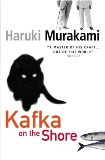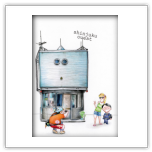Literature-Japan (32) - Japonly
Main menu
- Home
- Japan "lifestyle"
- Travel plans
- Our tour
- Images gallery
- Japonly-Le Blog
- Contact
Literature-Japan (32)
Because the japanese invented the novel.

Favourite ♥ : Haruki Murakami who plunges us into fantastic stories which mix modern and fantasized Japan, stories about coincidence that perhaps are not, stories tinged sometimes with melancholy and often surrealism. Some novels headlights: "Norwegian Wood ", "Kafka on the Shore", "A wild sheep chase" and the last published "1Q84".
Read an excerpt of 1Q84 



Kinu Yamaguchi, born in 1892, sold at the age of eight to a geisha house, she tells us about her rigorous training, privations and submission.
She flees after sexual initiation to return later and she becomes patron of a geisha house.
Read an excerpt of Memoirs of a Geisha.

A cat highly educated sees scroll in his new master house, characters more burlesque each than other and enjoys analyzing his reactions (indisposed by a stomach illness that gives him bad character) against his visitors.
Sometimes a bit long but nice atmosphere. A classic of Japanese literature.
The New Yorker called it "a nonchalant string of anecdotes and wisecracks, told by a fellow who doesn't have a name, and has never caught a mouse, and isn't much good for anything except watching human beings in action..."
Read an excerpt of I am a cat.

10/10 for the topics.
French or Japanese language book by Agnès Giard. About 350 pages with Japanese or French text and quite a lot of pictures. Artists discussed include Fuco Ueda, Makoto Aida, Toshio Saeki, Takato Yamamoto, Kizimecca, Ryo Yoshida, Ryoko Kimura, Chiho Aoshima, Harunobu Suzuki, Utamaro Kitagawa, Yuji Moriguchi, and MANY more.
Broken into eleven sections: L'amour des Culottes, La Culture de la Honte, L'Eau et les Tentacules, Histoire de Revenants, La Violence, Les Poupées, Travestissement et Métamorphoses, La Crise de la Masculinité, Révolution des Filles, L'Industrie du Sexe, Les Jouets pour Adulte.

God of Manga
Tezuka Osamu, the father of astroboy, a little animated robot with human feelings and super powers is considered as the god of manga. Before him, there were among others Nora-

To learn more about Takeshi Kitano's childhood, incredible multifaceted artist.
Author, poet, actor, comedian, singer ...(this book is in french)
From Publishers Weekly
The first American translation of acclaimed filmmaker Kitano's fiction is comprised of three short stories touching on different moments in childhood. The first, "The Champion in a Padded Kimono," features two brothers, one more athletically inclined than the other, at their elementary school's track and field day; the two enact the boyhood rituals of friendship and hero worship. The second story, "The Nest of Stars," narrated by the younger of two brothers, is the best of the three. Equally unpopular, the pair use astronomy as a vehicle for grief over their father, who gave them a telescope before he died. When their mother introduces her new boyfriend, the boys react badly. The final tale, "Okame-

New architecture in Japan
Editorial Reviews:
If you are interested in seeing beautiful and vivid photography of the progressive architectural projects of Japan, this book is for you.
About the Author
David Littlefield is a writer on architecture, and visiting professor at the University of the West of England, Bristol. Naomi Pollock is an American architect based in Tokyo, and has written articles on Japanese architecture for the Financial Times, New York Times, Wallpaper* and Architectural Record. Yuki Sumner is a London-
Of course, like for cinema, music, humor, ... There is an impressive number of other artists to discover!

Note: the inventor of the first novel is a Japanese woman named Murasaki Shikibu!








